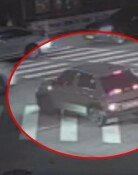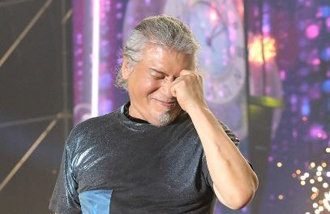Japan prof. cites evidence of Korea`s ownership of Dokdo
Japan prof. cites evidence of Korea`s ownership of Dokdo
Posted August. 28, 2012 09:16,
Koreas ranking officials should proactively step in to enable outsiders to specifically and logically understand that Dokdo is Korean territory. While Japan`s prime minister is trying to make a logical claim that Japan owns Dokdo in person, Korea cannot convince the world if it stubbornly responds by merely saying, There is no reason even to think it over.
Yuji Hosaka, 56, a liberal arts professor at Sejong University in Seoul who has championed Koreas sovereignty over the country`s easternmost islets, told The Dong-A Ilbo in an interview Sunday, "The Korean government should respond to Japan over the Dokdo dispute through logic based on detailed data."
Hosaka developed an interest in Korean history after learning of the assassination of Korean Empress Myeongseong by Japanese gangsters in the late Joseon Dynasty. Majoring in science education at the University of Tokyo, he came to Korea in 1998, earned his masters degree and doctorate in political science from Korea University, and became a naturalized Korean citizen in 2003. The scholar has authored a number of books saying Dokdo belong to Korea, including Dokdo, the Republic of Korea, and Dokdo Is Not Found on Ancient Japanese Maps.
Using evidence and facts, he refuted item by item the claims of Japanese Prime Minister Yoshihiko Noda made in a news conference Friday on Dokdo. Here are excerpts from the Dong-A interview.
Dong-A: Japan claims that Japanese fishermen used Dokdo only after gaining a license from the Edo Shogunate in the Edo period, and that it established sovereignty over the islets no later than the late 17th century.
Hosaka: Japanese fishermen acquired a license to cross the sea to visit Ulleung Island in the 1620s. Back then, a license to cross the sea was used to gain approval for a visit to a foreign country at the time. This means Ulleung Island was a foreign land. Records from the era suggesting Dokdo was satellite islets of Ulleung have been found as well.
(At a 2008 academic forum hosted by the Association for Research and Preservation of Dokdo, the professor said, Ulleung Island and Dokdo were always the same color in ancient maps of Japan, and they were perceived as a couple.)
Japan cites a book published in 1667 as the historical grounds for its territorial sovereignty over Dokdo in the 17th century. Professor Satoshi Ikeuchi from the University of Nagoya studied this book and published in the early 2000s a research paper arguing that it would be inaccurate to interpret Ulleung Island and Dokdo as Japanese territories. No one in Japan could deny the accuracy of this study.
Dong-A: Japan argues that reference books supporting the claim that Korea had effective control over Dokdo before Japan are ambiguous, and claims no specific grounds for the claim.
Hosaka: Japan says Japanese people visited Ulleung Island and Dokdo between 1620 and 1693. At the time, Japanese fishermen went to Ulleung to catch fish and abalone, and once in a while, they rested or caught sea lions. But for a Japanese fisherman to visit Ulleung and Dokdo, which were foreign lands, was an illegal act in itself for more than 70 years.
Joseon (Korean) citizens led by Ahn Yong-bok clashed with Japanese fishermen on Ulleung Island in 1693. When conflicts occurred, the Ego Shogunate concluded that Ulleung and Dokdo belonged to Korea because they were closer to Joseons mainland. The shogunate asked the lord of Dottori if there were islands similar to Ulleung and Dokdo. This means that even the Edo Shogunate was unaware of Dokdo`s existence. As such, Japans sovereignty claim to Dokdo makes no sense.
In January 1696, the Edo Shogunate placed a ban on crossing the sea to Ulleung Island. Since Japan considered Dokdo satellite islets of Ulleung, the restriction effectively prohibited crossing the sea to Dokdo. Japan claims that the ban`s scope did not cover Dokdo but had never issued a license to cross the sea for a visit there even before then. Since it had no license for a visit to Dokdo, it had no reason to issue the ban.
(In collaboration with Koreas Northeast Asian History Foundation, Hosaka unveiled in 2010 three official Japanese maps from the 19th century that had no markings of Dokdo, including Full Map of Great Japan published in 1877 by the Office of the Japanese Army Chief of Staff. He also released Joseonguk Yakdo (Joseon Kingdom Brief Map)" published in 1814, which showed Ulleung and Usan (Dokdo islets) in the East Sea mapped as Korean territory, and suggested an area up to Oki Island as the Japanese border area with Joseon.)
Dong-A: What do you think of Japan`s claim that it officially incorporated Dokdo, which was uninhabited then, into Shimane Prefecture in 1905?
Hosaka: Japan incorporated Dokdo into Oki Island (belonging to Shimane) in 1905, saying it had effective control over the islets on the grounds that a Japanese man moved to Dokdo and fished for sea lions there from 1903 to 1904. But several pieces of evidence suggesting that Ulleung Island had been managing Dokdo before 1905 have been discovered over the past two years.
If Japanese were to fish in waters of the Korean Empire, they had to pay taxes. According to records from 1897, Japanese paid export taxes to the administrative chief of Ulleung Island when they exported fish products and sea lions they caught in Ulleung and Dokdo. Levying tax is clear evidence that Korea had effective control over the islets.
savoring@donga.com
Headline News
- S. Korea, US agree on defense const sharing-plan US presidential election
- Medical school quota discussions spark confusion 40 days before exam
- Zuckerberg surpasses Bezos to become world’s second richest person
- Son excluded from October national team due to thigh injury
- Ruing and opposition leaders launch campaigns ahead of by-election







